Affiliate disclosure: This post may contain affiliate links. Please see our Privacy Policy.
Homesteading on wooded land has its own unique challenges, but the benefits outweigh the costs for my family.
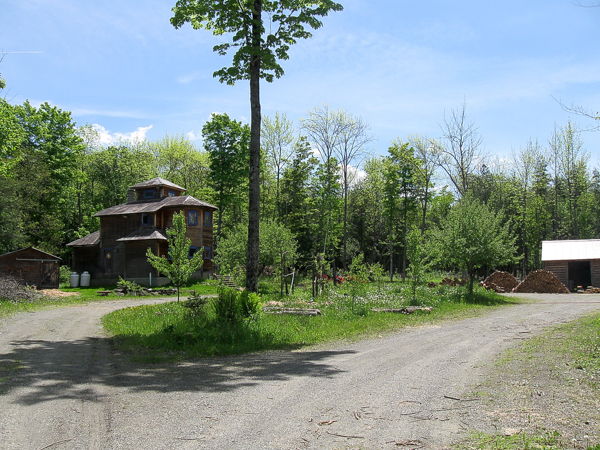
When most people think of “homesteading” they imagine little house on the prairie. Wide-open spaces, plenty of open land and sunlight all around.
But what happens when you try to homestead on wooded land? You still want to grow your own food, but you’re in a completely different environment.
When we found our forever homestead in rural Vermont, we never imagined we’d buy fully forested land. We’d need pasture and sunny garden space, and clearing land is oppressively hard work, especially if you’ve never held a chainsaw.
Still, forested land is what we found, and we’ve spent the last 6 years learning to grow in shade and maximize our forest crops, all while slowly clearing patches for annual vegetables.
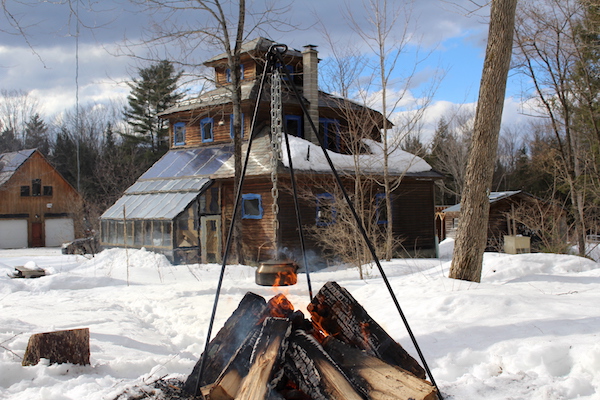
Farming the Woods
When you think about it, there are actually a lot of food crops that come straight from the woods. Shiitake mushrooms are grown on hardwood logs and maple syrup comes right out of the tree. Wild foraged crops like ramps (wild leeks) can only grow in shade, and even the ginger we grow in containers needs shade to thrive.
Our creativity only stretched so far though. We knew there was more, but where to get started. How do you know what you can grow in the woods?
By far, the best reference we’ve found is a book called Farming the Woods. It’s one of my favorite permaculture books, and it was on my bedside table all winter long.
Not only did I get the specifics for tapping our own birch trees for syrup from this book, but I learned that there are dozens of other trees you can tap for syrup. The book is heavy on forest medicinals and opened my mind to the idea of harvesting medicinal products from trees. It also covers basic tree crops like nuts and fruit, all with a permaculture lens.
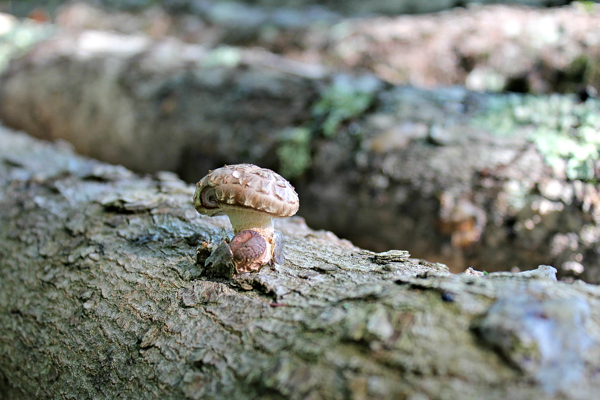
Gardening in Shade
While we are clearing some land for an annual garden, there are a number of trees we just can’t justify cutting. Maples that my husband and I together can’t wrap our arms around.
Some of those have names, like our very own woodland pets. It’s hard when they’re dappled about here and there, and there’s no continuous space for a full sun garden.
Luckily there are plenty of vegetables that grow in shade.
Just about anything that doesn’t flower and produce fruit tends to tolerate shade, so that means plenty of greens, kale, cabbage and root crops. The Resilient Gardner taught me that there are bean and tomato varieties that can tolerate shade too.
We’ve also learned how to eat a number of other things that you wouldn’t normally think of as food crops. Hostas are edible, and they grow vigorously in shade. Ours taste like a cross between asparagus and leeks, but I’m told every variety tastes a bit different.
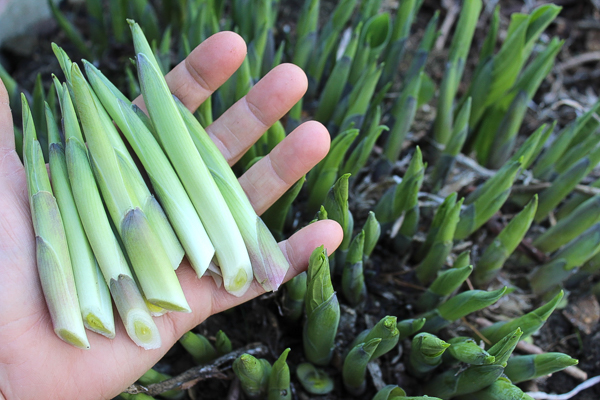
Gardening on Woodland Soil
There’s another trick to gardening on wooded land though, and one that’s harder to overcome than shade in the long term: soil fertility.
We try to cycle nutrients and avoid importing anything from outside our homestead, but that’s tricky when you get lots of rain in the summer growing season. That rain has the ability to leach nutrients, and anywhere that it rains enough to support a temperate forest, it rains enough to leach calcium from the soil in abundance.
I’ve learned a lot about growing vegetables on low inputs from the book Gardening When it Counts and though he advocates for near-zero outside inputs, agricultural lime is the main exception.
Any area that gets enough rainfall to support a temperate forest also gets enough annual rainfall to leach the calcium from the soil. Bad news for farmers along most of the East Coast.
Our best success has been in building cordwood raised beds using hemlock logs. Hemlock is a softwood with very little use for home heating, but it does absorb water readily and helps to buffer the soil from high rainfall events. These raised beds keep our garden from flooding out and give the plants a bit of extra soil above our clay layer.
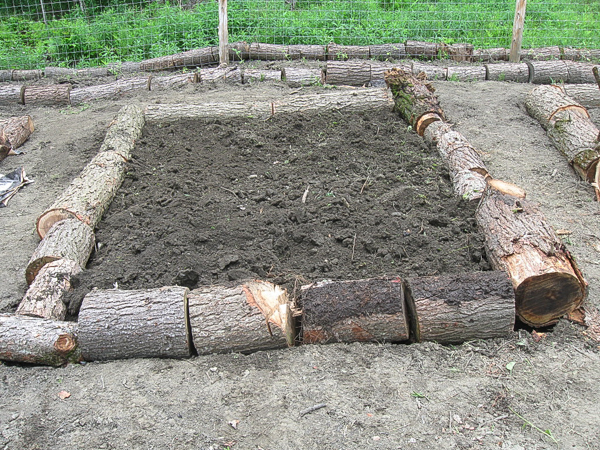
Silvopasture
Though we don’t have wide-open grassland pastures, we’ve been experimenting with silvopasture. That’s a practice where you pasture animals in wooded areas, which allows you to raise meat without having to clear-cut your woodlot.
Thus far, we’ve had mixed success. Our pigs clearly didn’t have enough space, and they rooted and rubbed enough to actually take down several large trees. Perhaps it’s also because our soils are so shallow, and it doesn’t take much work to root up a tree.
Ducks also took a toll on our woodlot. They dug through the leaf litter for spiders and bugs and managed to completely eliminate the leaf cover in some areas in a single summer.
That meant erosion for bare soil, and happy ducks playing in the mud. Perhaps that was their plan.
The author of Farming the Woods has a new book out completely devoted to the topic: Silvopasture: A Guide to Managing Grazing Animals, Forage Crops and Trees in a Temperate Ecosystem. Hopefully, we’ll have better success with a bit more research because managing animals in a woodland is not easy.
If you’ve had success with silvopasture, I’d love to hear about it. For now, the animals are retired and we’re back to focusing on plant-based permaculture.
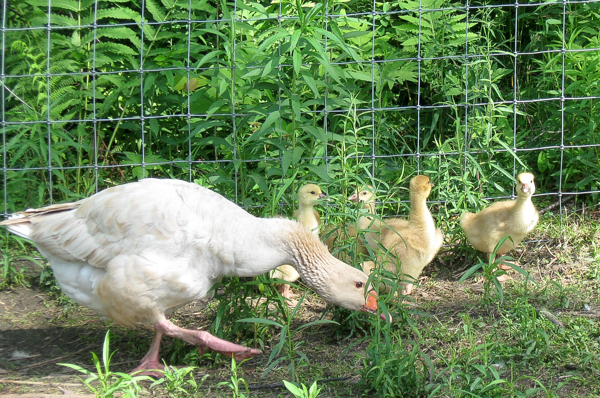
Woodland Permaculture
We’ve had the most success sticking with plants that are well adapted to growing in a wooded environment.
Currants, for example, grow wild in our area and are well adapted to growing in shady wet soils. If there are two things we have, it’s shade and water. The previous owners or our homestead planted a few blackcurrant bushes that were overtaken by woodland, and they didn’t mind one bit.
The 6-foot tall bushes produced more than 10 pounds of berries each while growing in near full shade and seasonal standing water. We’re always looking for more things to make with them, and our favorite thus far is blackcurrant mead (honey wine).
Plums do best in full sun, but they’re tolerating part shade and wet soils better than any other tree we’ve tried. Our full sun trees near the house produce the best, but we get about 2/3rds as much fruit from woods edge plum trees.
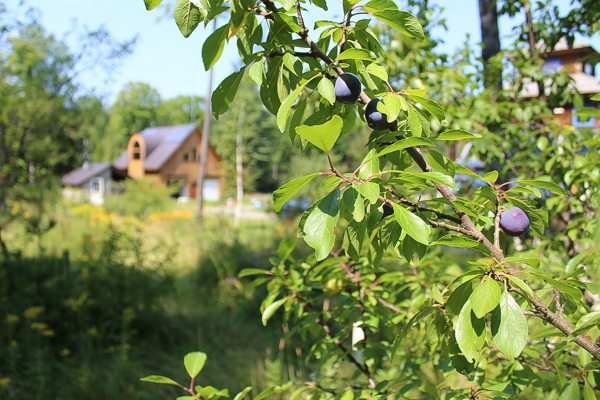
Foraging Wild Woodland Crops
One of the real benefits of established woodland is that there’s an established environment for foraging tasty mushrooms and woodland medicinals. You cant plant chanterelles or morels, but we’re blessed by an abundance of them.
Reishi mushrooms, a potent medicinal, grow like weeds here. Every year we make them into a reishi tincture to keep us healthy in the wintertime.
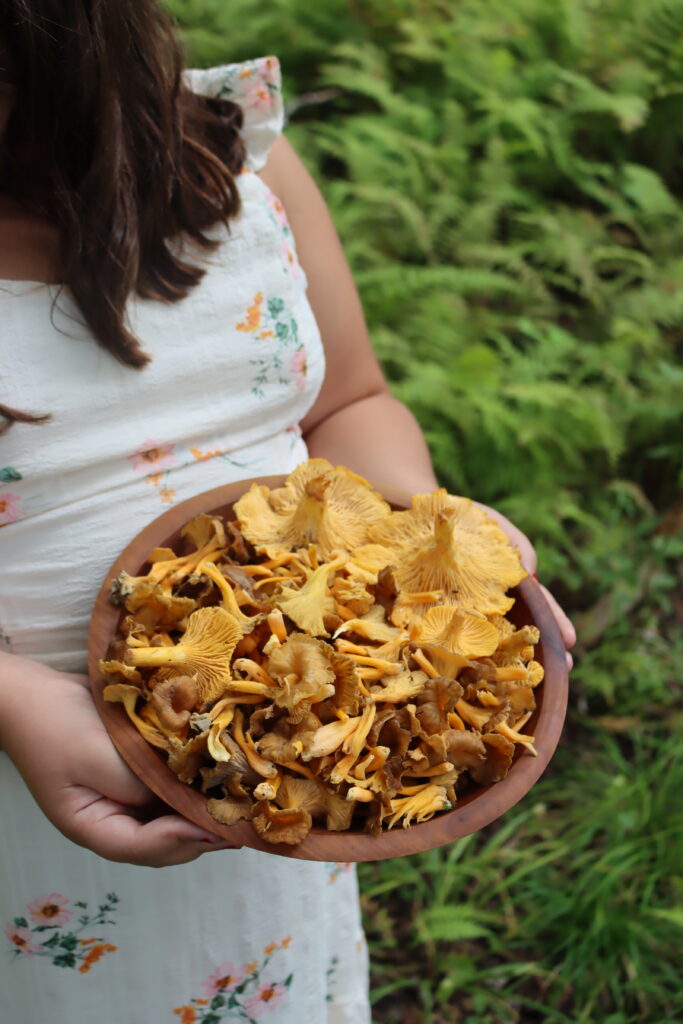
I’m learning to forage bark for food and medicine, like willow bark for pain relief and birch bark for flour. Linden trees have tasty edible leave for salads and medicinal blossoms for stress. Next up on my list to harvest is pine pitch, because it can be used to create waterproof seals as well as medicinal salves.
We’re not the only ones that can feast on a woodland bounty. Bees have many wild forage sources in a woodland setting, like maple flowers and the flowers of shade-tolerant understory plants. Honey is one of our most successful crops.
We’re hoping to add some cultivated “wild” woodland medicinals to our land in the coming years, and I’m going to spend some time with the book Growing and Marketing Ginseng, Goldenseal and Other Woodland Medicinals this winter in the off-season.
If you’re homesteading on wooded land, I’d love to hear about your experiences. Leave a note in the comments below.
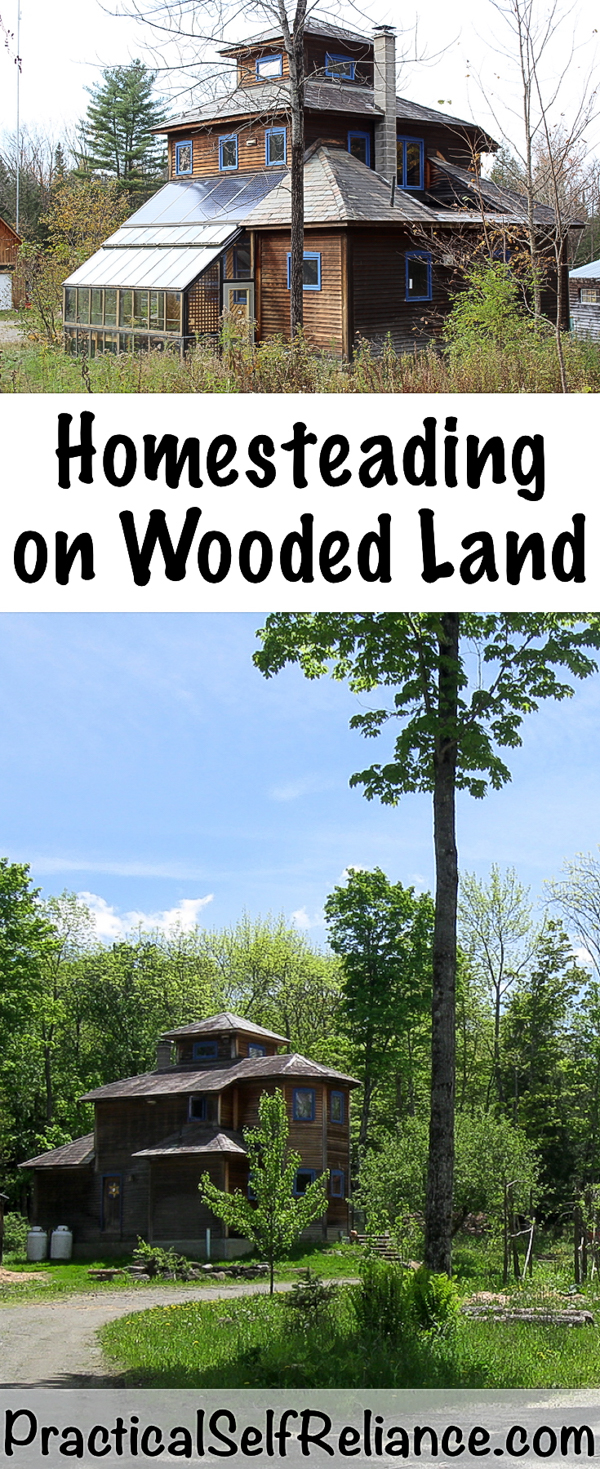
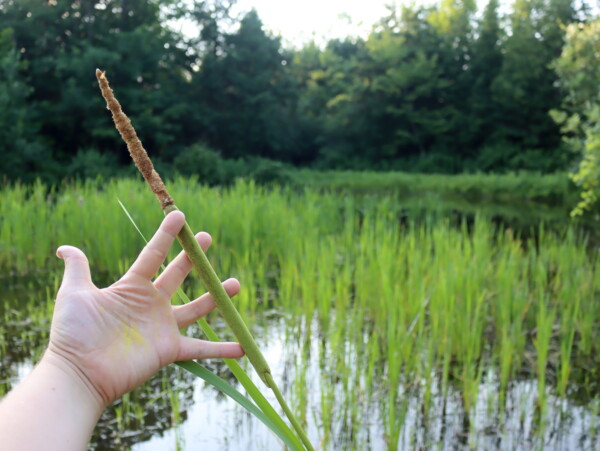
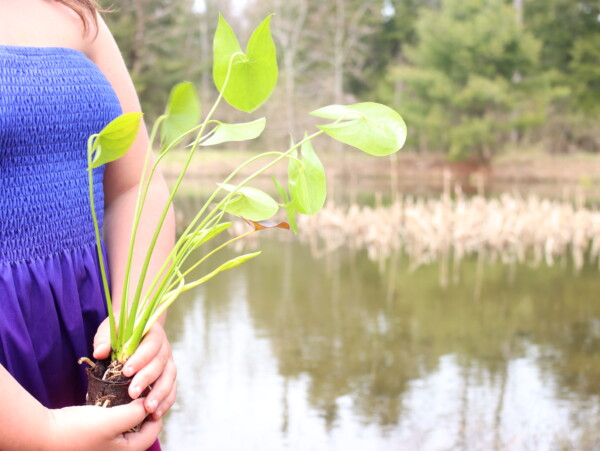
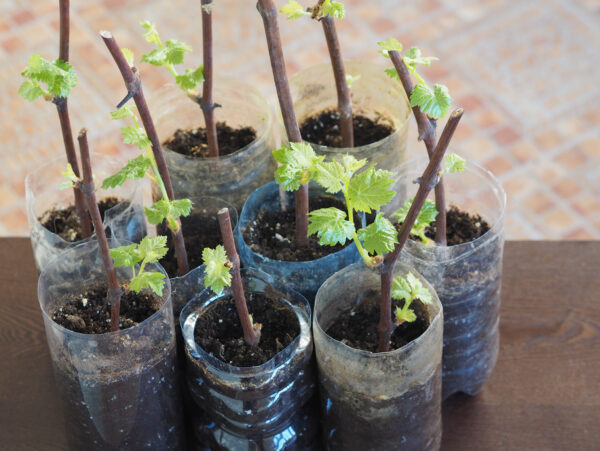
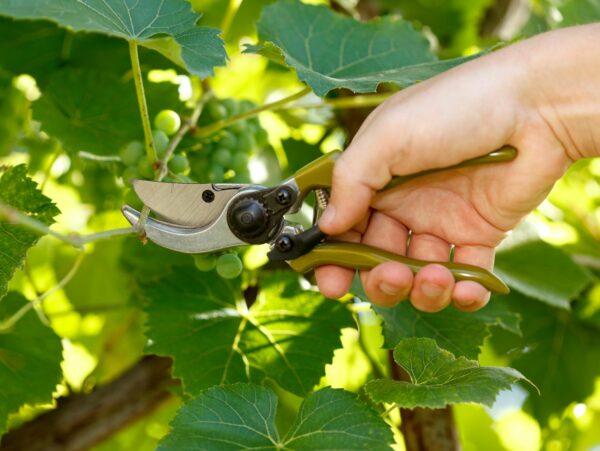










You may want to look into planting Papaw trees. They thrive in the woods and the fruit is delicious.
I grew up eating Papaw’s off of trees in the woods. They prefer to be surrounded by trees. They are a delicious pineapple/banana/mango tasting fruit and very cold weather hardy I wonder if they would work for you?
Thanks for all the info! We bought 3 acres of wooded land to begin our homesteading adventure. I loved all your book recommendations, thank you! My library had them all!!! 🙂 Here in the southeast, our neighbor has pinneywood cattle, this breed of cattle is a heritage breed brought in the 1500s and released into the wild. They grew accustomed to living in the woods. They are not as big as other more commercial breeds but their meat is delicious and they produce about 1-2 gal of milk a day, which is plenty of milk for a small homestead. I don’t know if they do well on very cold winters but it’s worth looking into. Of coarse chickens do well in the shade and foraging woods, especially if you contain them to an area you’d like to garden since their waste is great fertilizer! Chickens can be dual purpose providing eggs and meat. We are still trying to figure out how to get fruit trees growing, so I appreciated your experience and thoughts on that! We’ll have to try currants. Have you read “The woodland homestead” by Brett McLeod?
Wonderful, I’ll look into those cattle. Our soils are so wet though I’m not sure they could handle an animal that large, but they’d probably be great most places. I just heard about “The woodland homestead” and I have it on my list to check out next trip to the library.
I’m in the mid-stage of purchasing a small farm in Nova Scotia. About 10 acres is cleared pasture/hay field. The rest is forest and overgrown scrub. My goats and sheep will be helping me in creating silvopasture (love that book). I, too, plan to farm the forest. Looking forward to the adventure!
Wonderful! Good luck with your adventures =)
Hi Ashley – we have about 10 acres of woodland on one end of our sheep farm (Northern England) and the sheep live in great harmony with the forest! They do rub on trees to scratch themselves but we’ve never noticed them take a tree down (and our woodland’s on a steep bank down to a river so we also don’t have the sturdiest footing for trees), plus they don’t tear things up the way some other animals do. You’d just have to put up with finding tufts of wool in the bark here and there. I love your website and I didn’t know that hostas were edible so thank you for that gem.